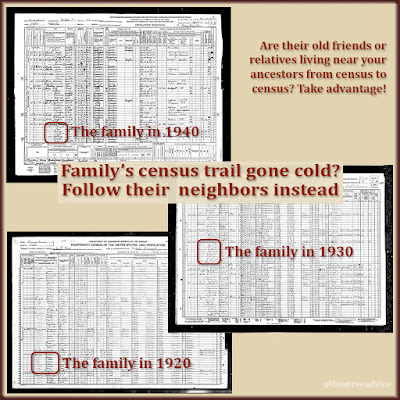I spent the weekend with the type of genealogy records I hate: Latin church records. Normally I'm knee-deep in Italian vital records. It's second nature to locate and pull out the facts I need:
- dates
- names
- relationships
But I would cringe when faced with a church record written in Latin. Reading an Italian document is as easy for me as reading an English document. That took practice. Complete immersion in Italian vital records made them easier and easier to understand.
Now I'm more comfortable with Latin records after a weekend of immersion.
The town I was researching had very brief church records. They didn't include anyone's age. That did simplify things, though. All I needed to translate was the date and names.
Here's a breakdown of the 3 things you need to know to get over any fear of Latin documents.
 |
| Talk about facing your fears. After a weekend of non-stop Latin church records, I have no problem translating these genealogy documents anymore! |
1. Latin Dates
Nearly all the documents I was reading wrote the day of the month as numerals, not words. Some records did spell out the day of the month. When that happens, I consult the Latin Genealogical Word List on FamilySearch.org.
I got stuck on one document where the writing was faint, and they wrote the day of the month as an ordinal number (first, second, third, etc.).
There were a lot of birth records on the same page. The records before this one had the Latin words for 23rd, 25th, 26th, and the records after it said the 28th and 29th. That narrowed things down. I compared the numbers on the page. Then I consulted the Numbers section of the Latin word list. I decided this date said vicesimus octavus, the 28th.
The Latin months are very close to English and Italian months. They're easy to understand. But sometimes the documents use a shorthand I know from Italian records. They abbreviate September through December as:
- 7bre. Forget that it's the 9th month of the year. The beginning of September means seven. In Italian it's Settembre. Sette means 7, so 7bre for short.
- 8bre. In Italian the word is Ottobre, and otto means 8; 8bre.
- 9bre. Novembre; nove means 9.
- Xbre. They use a Roman number in most cases, but you may see 10bre. In Italian it's Dicembre, and dieci means 10.
They wrote the year as numerals in the documents I was reading. But you're probably viewing these documents in a collection for a particular year. You should already know which year you're viewing. If your document isn't in a collection, or it mentions another year, check the Latin genealogical word list.
2. Vital Record Words
You'll get used to the other key words you need to focus on:
- Die. Often the first word on a document, die means on the day. The document may begin Die 24 9bris 1814, meaning on the 24th day of November, 1814.
- Nomen. When you're looking at a baptism record, try to find the word nomen. Right after it is the first name given to the baby.
- Natus/Natu/Nata, ex, et. A bit above the baby's name, look for a variation of natus ex. This means born of, and right after the ex you'll see the baby's father's name followed by et, which means and. Then comes the baby's mother's name.
Here is an example of the key sentence in a baptism record, dissected for translation:
- nata (if it ends in an a, the baby is a girl) means born
- ex Joseph [last name] means of Joseph, as in the baby is born of Joseph, its father
- et Rosa [last name] means and Rosa, so the baby is born of Joseph and Rosa
- cui impom est nomen [impom is an abbreviation of impositus] Rosaria means they give to the baby the name Rosaria
The full sentence would look something like: Nata ex Joseph et Rosa cui impom est nomen Rosaria.
Now that you know the construction, it isn't so intimidating.
Marriage documents have keywords, too. Look for matrimonio tra near the beginning of the document. This means marriage between. Then find the groom's name and his parents, followed by the bride's name and her parents.
 |
| These compact little marriage records pack a lot of info into a small space. And the Latin genealogy words are nothing to be afraid of. |
The marriage documents I viewed stacked 3 dates in a row. These were the dates when the couple posted their intention to marry, or their marriage banns. Then, in different handwriting, I saw another date and several names. This was the date on which the couple married in the church.
3. Latin Names
The last piece of the puzzle is the names. On these documents from an Italian church, the last names were in their original Italian. Most first names were in Latin. Once I got used to them, it wasn't a problem. Know that male names often end in -us or -ius, while female names end in -a. Here are some examples:
- Antonius = Antonio or Anthony or Anton; the female is Antonia
- Dominicus = Domenico or Domenick; the female is Dominica
- Franciscus = Francesco or Francis or Frank; the female is Francisca
- Joseph = Giuseppe or Josef; the female is Josepha
- Joannes = Giovanni or John or Johann; the female is Joanna
- Sebastianus = Sebastiano or Sebastian; the female is Sebastiana
- Vincentius = Vincenzo or Vincent; the female is Vincenta
For some Italian names, they change an f to ph. Epiphanio is Epifanio and Philippo (sometimes shortened to Pho) is Filippo.
You can get used to Latin by looking for the key words you need and dissecting the sentences. This is exactly how I recommend people get used to Italian documents. Find the key words that help you understand:
- Birth records: who is the baby and who are the parents
- Death records: who died and who were their parents and spouse
- Marriage records: who is getting married and who are their parents
This is an article I never thought I'd write because Latin documents made me cringe. But now I see how they work. Just pick out the dates names you need. Don't let them scare you.










